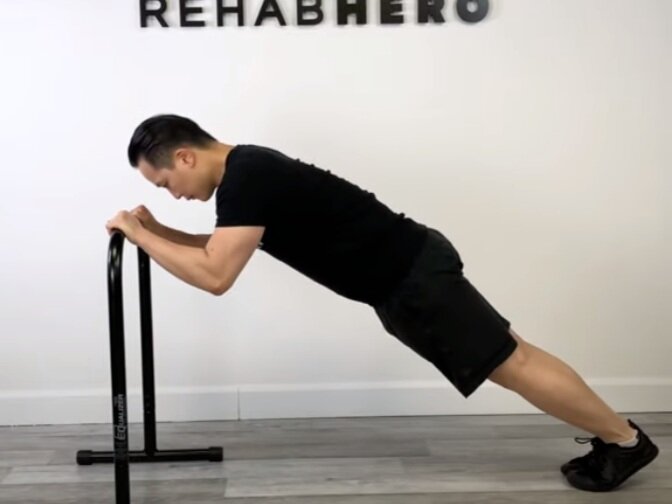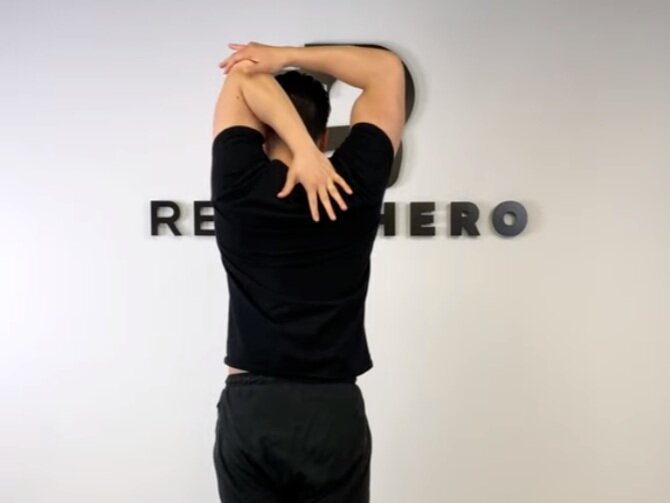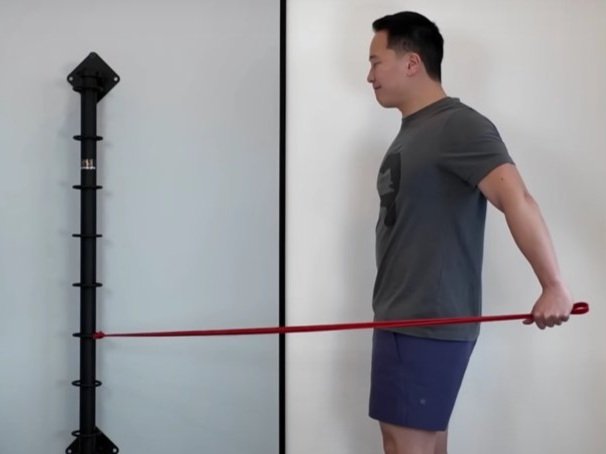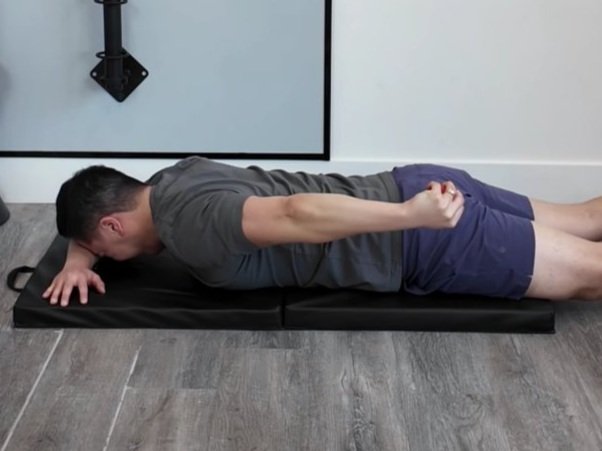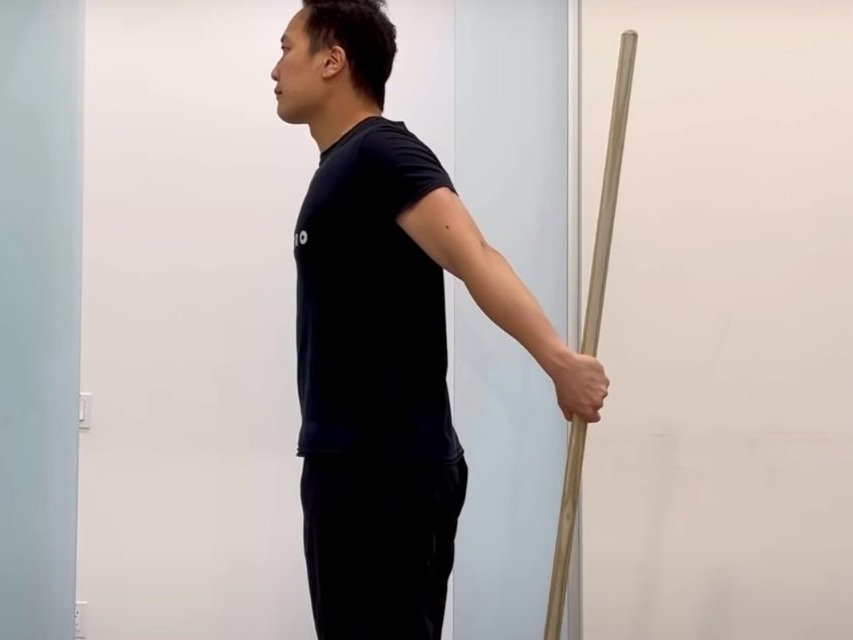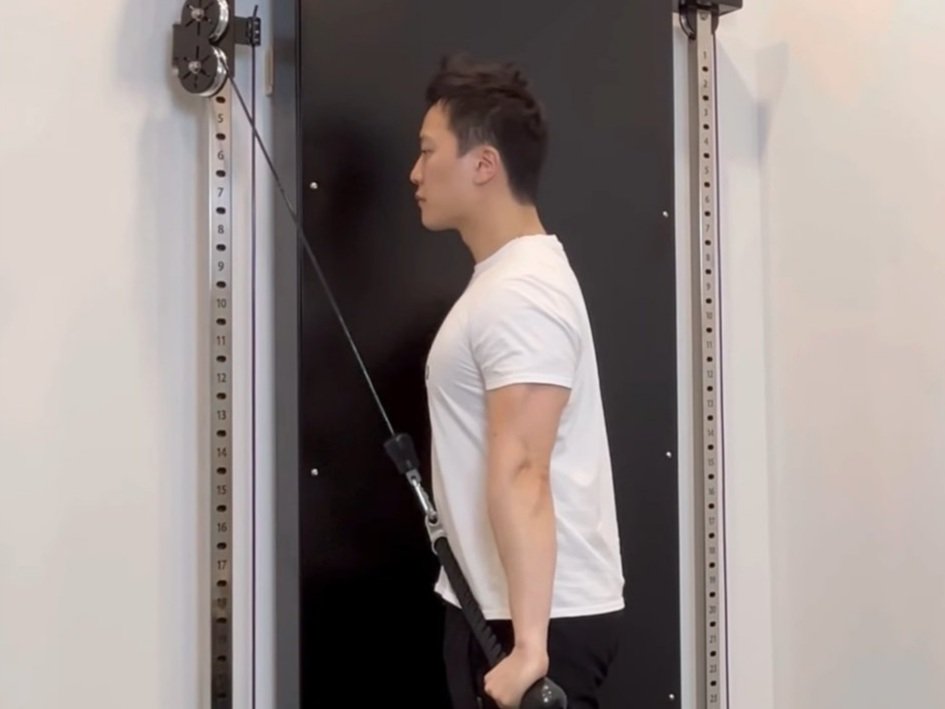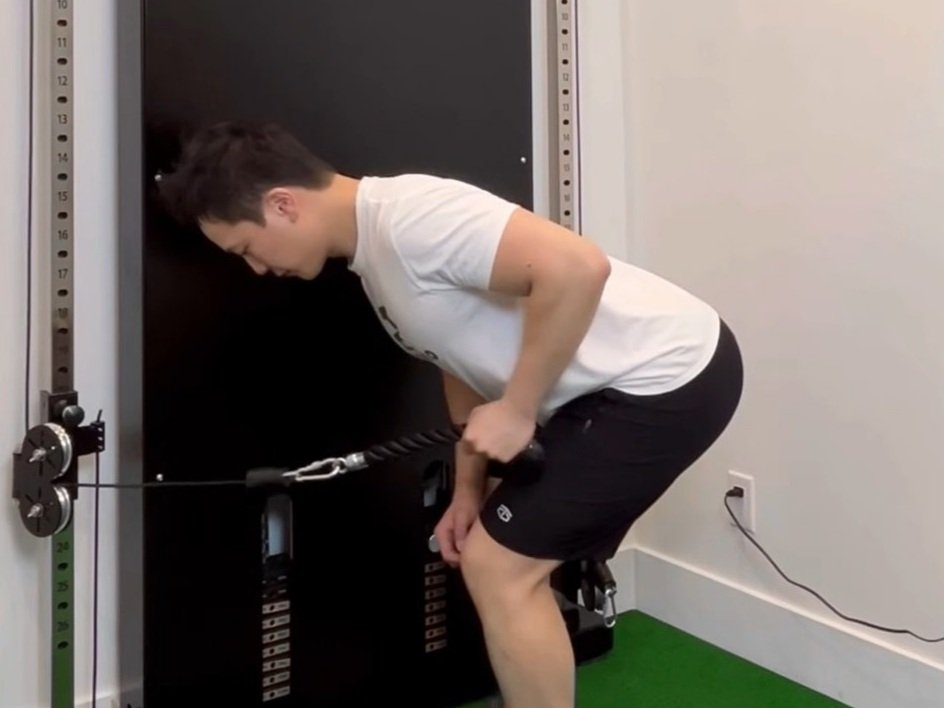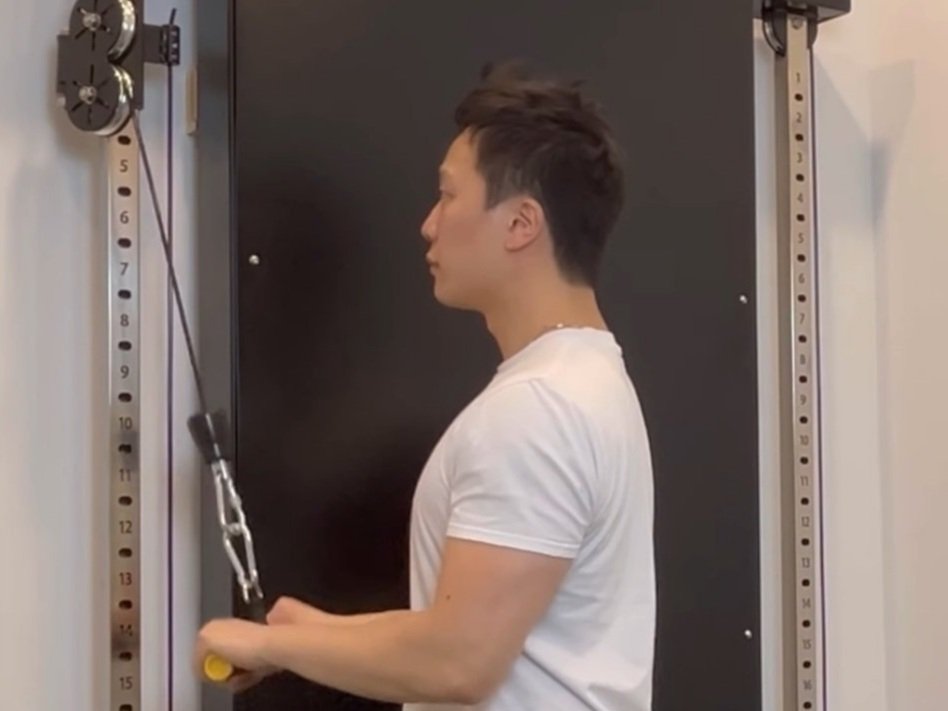Why does my elbow hurt?
About Triceps Tendinopathy
Learn about this condition that can cause elbow pain.
What is Triceps Tendonitis?
Triceps tendonitis refers to injury of the triceps tendon due to overload of the tendon. It is the least common tendonitis of the elbow. It is more accurately referred to as a tendinopathy as inflammation is typically not the primary driving factory. It is typically due to overload of the tendon. This occurs when the load capacity is exceeded and the triceps is used continuously at loads above this threshold, which leads to tendon injury.
The triceps tendon inserts onto the posterior (back) surface of the elbow. As the triceps contracts, tension passes through the tendon, allowing the movements of the muscle to occur. The primary function of the triceps is extension of the elbow joint in addition to stabilizing the elbow. The long head of the triceps also contributes to shoulder adduction and extension, which helps stabilize the shoulder.
Clinical presentation
Triceps tendinopathy typically presents as a chronic posterior elbow pain that is aggravated by active extension of the elbow. Increased demands on the triceps in the form of higher load, increased usage, or quicker movement speed will have a direct effect on the level of symptoms experienced.
Due to the increased forces placed on the tendon when the elbow is flexed, it is likely that there will be greater discomfort if exercises are taken into further elbow flexion. For example, this will present as difficulty with exercises such as skull crushers, bench press, dips, and overhead triceps extensions.
The symptoms you may experience will vary depending on which of the three stages of triceps tendinopathy you are in. More mild symptoms include pain with use of the muscle, general soreness in the triceps, popping noises, and weakness of the arm. As the condition progresses you may notice palpable nodules, tendon thickening, a bulge in the elbow, and significant range of motion limitations.
Who does this affect
This condition typically affects males and can occur at all ages. It is commonly seen in professional weight lifters and throwing athletes aged 30 to 40 years of age.
There are several factors that increase the likelihood of developing this condition. Training related factors include: a rapid increase in training volume or how often you do a repetitive movement, improper technique, and overtraining. Other potential risk factors are anabolic steroid use and chronic conditions (e.g. diabetes, rheumatoid arthritis).
Why does this happen
This injury typically occurs because of overuse of the triceps muscle leading to a gradual accumulation of microtrauma. This will occur in activities that emphasize strength in elbow extension including: using a hammer, throwing a baseball, and exercises such as bench pressing. Another less common mechanism of injury is due to an acute trauma placing a great deal of strain on the tendon.
Treatment options and what to expect from therapy
The primary goals of treatment are to reduce pain, stop further accumulation of injury, and develop an effective loading strategy to regain adequate strength in the triceps tendon and muscle. The first steps are to determine the stage of tendinopathy you are in and identify the current load capacity of the triceps in activities stressing the muscle. Your treating therapist will use manual therapy and modalities as necessary in order to increase range of motion, decrease pain, and reduce other symptoms.
An assessment with a chiropractor or physiotherapist will assist in staging the tendinopathy. Diagnosing the stage of tendinopathy will consider your timeline of injury, presenting symptoms, previous injuries, demands you place on the triceps tendon and response to load. Staging of the condition is important because it will guide the treatment plan and will influence the timeline of healing. To get assessed by a Rehab Hero qualified professional click the button below:
An important component of tendon rehab is progressively regaining tolerance to load. If the tendon is rested or underloaded it will not regain its previous level of strength and function. It is important to find the right balance of load to optimize healing and prevent future re-injury. Preventing further overload is important to protect the tendon from more damage and mitigate worsening of symptoms. The simplest way to think of this is the Goldilocks principle.
So why not rest the tendon and strengthen after? This will take significantly longer and will not truly solve the problem because tendons require loading to heal and regain their previous level of function. The direction of loading guides the placement of collagen fibers during the healing process; therefore, it is ideal to stop the overload while continuing to load the tendon in a controlled manner.
Once the baseline is established your rehab specialist will progressively load you through isometric, concentric and eccentric loads in the appropriate positions as per your assessment findings. Eccentric loading has been found to promote tendon healing and repair; however it also places the greatest forces on the tendon. Therefore, it is important to progressive load and keep track of your progress and symptoms.
Exercises for Triceps Tendinopathy
Listed below are three exercises that are indicated for triceps tendinopathy. Each case is different, so these may or may not be an appropriate starting point for you.
DISCLAIMER:
The information in this blog is not intended nor implied to be a substituted for professional medical advice, diagnosis or treatment. All content, including text, graphics, videos, images, and information, contained in this post is for general information purposes only and does not replace a consultation with your own doctor/health professional.
This exercise is an eccentric strengthening exercise for the triceps. It is important to gauge your symptoms when determining the depth and tempo you perform this exercise with. It is important to avoid being too aggressive to prevent flaring up of your symptoms.
This is an alternative version of the conventional push up. This is also an eccentric version of the military push up to increase muscle and tendon time under tension. A normal tempo can be used depending on your exercise goals. For this version, your arms will be tucked next to your torso with your wrist positioned directly below the elbow at the bottom position of the push up. Proceed by extending the elbow and flexing the shoulder to reach the top hold position. Slowly lower the body back down to the ground at a 5 second tempo. Repeat as required.
This exercise is an eccentric strengthening exercise for the triceps. It is important to gauge your symptoms when determining the depth and tempo you perform this exercise with. You may modify the load of the movement by changing the incline of your body. It is important to avoid being too aggressive to prevent flaring up of your symptoms.
This is an elbow extensor and core strengthening exercise. You may use a stable table, olympic rings, or suspension trainer in replacement of a paralette bar. Hold the surface with both arms at 90 degrees shoulder flexion. Keep the elbow in line with the shoulder and hands shoulder width apart. Maintain a neutral spine by bracing the core and stay on the balls of your toes. Flex the elbows to lower your body towards the ground and hands towards the forehead. Extend your elbows back out to raise the body back to starting position. The emphasis will be on controlling the eccentric portion (bending of the elbows).
This is a stretch for the triceps muscle group. Raise one arm overhead and bend the elbow so that the hand is placed on your upper back. Use your other arm to pull the elbow closer to your head. Hold the stretch for 3-5 breaths or for up to 20-30 seconds as needed.
To know whether or not these exercises are appropriate for you ask your health care practitioner. To consult with a Rehab Hero physiotherapist or chiropractor book an appointment using the button below:
You can learn more about Triceps Tendinitis management by watching this video by Toronto chiropractor Dr. David Song:
For advanced exercisers we have another video that is a part 2 in the triceps tendinitis management series:
Written By: Slava Kozlov
Slava is a physiotherapy resident that practices in Markham. His focus is on incorporating strength and conditioning with myofascial release therapy in order to help his patients move pain free. Outside of the clinic you can find him traveling the world and doing calisthenics.



